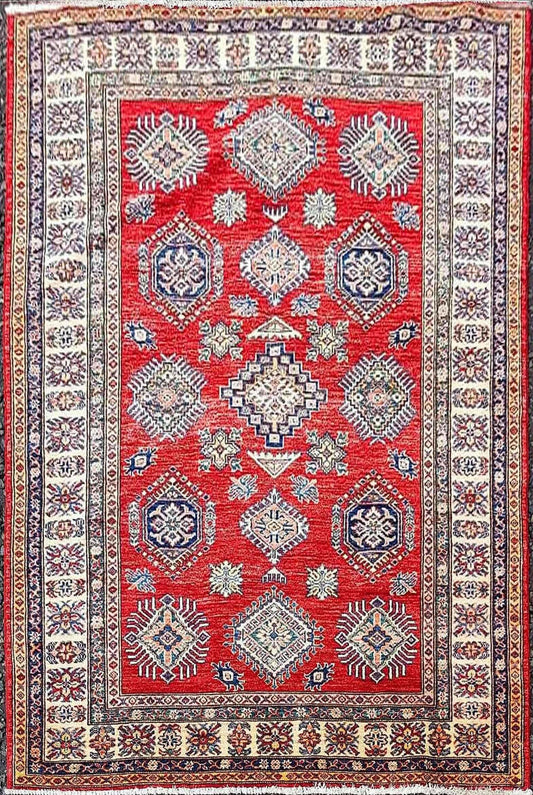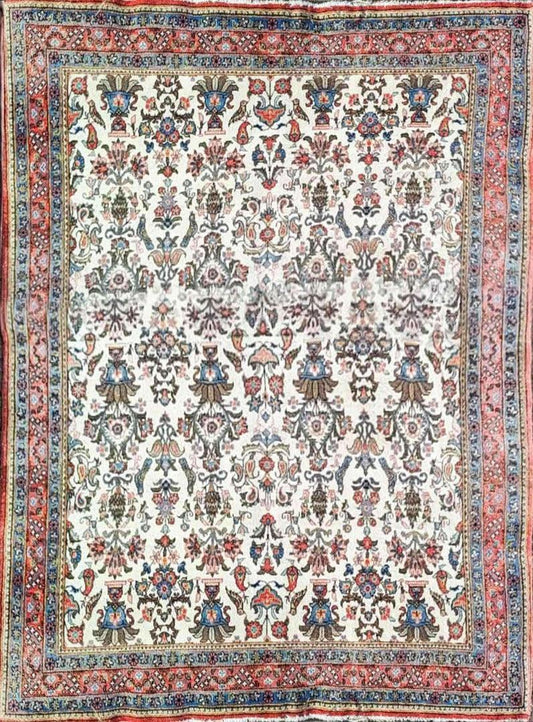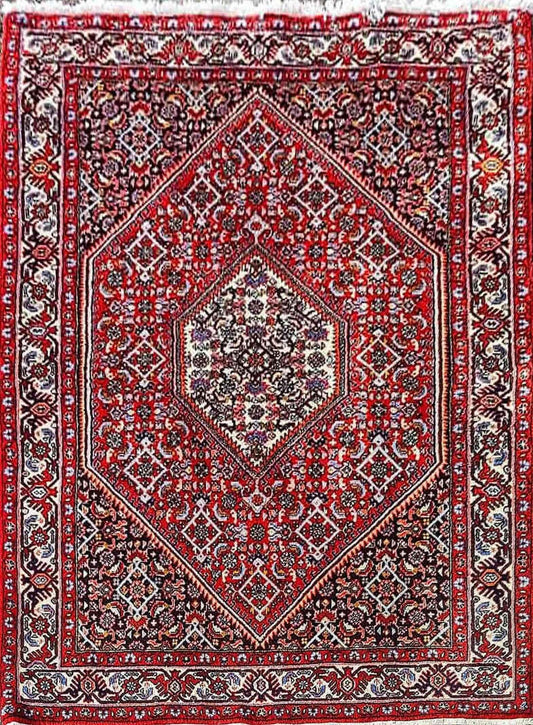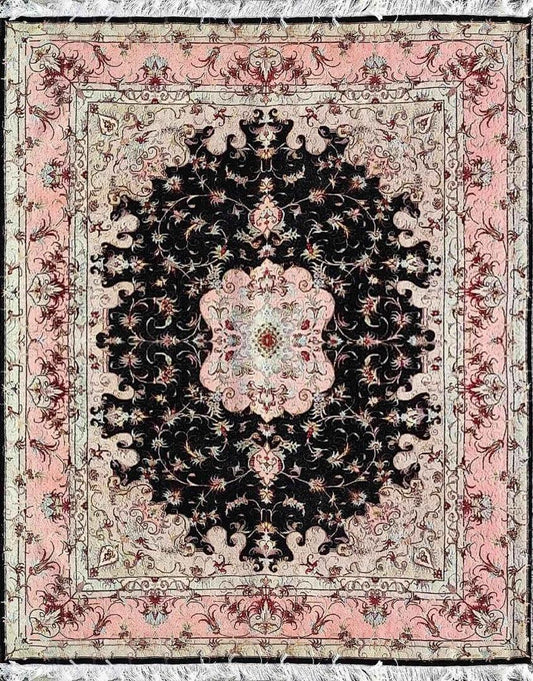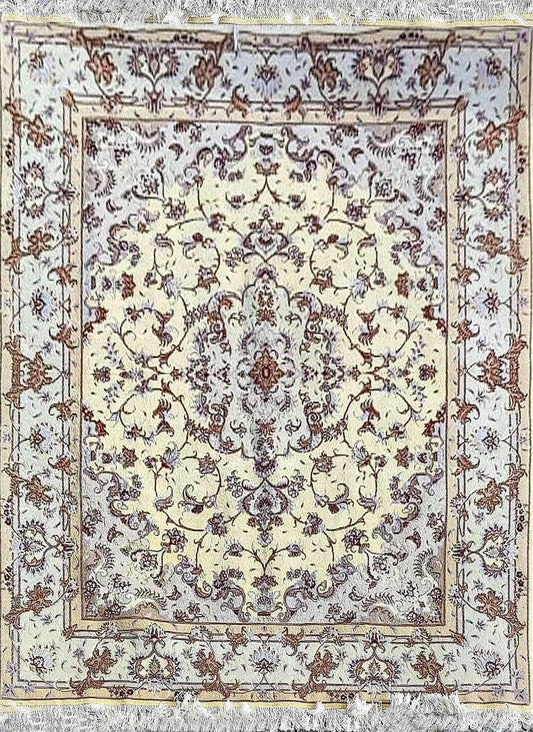Handmade Traditional Blue Rug 255 x 168 cm (8.37 x 5.51 ft)
- Regular price
- £960.00
- Regular price
-
£0.00 - Sale price
- £960.00
- Unit price
- per
Couldn't load pickup availability
Description
xThe holy city of Qum has gained significant renown and prestige over the years, with occasional discussions about relocating the capital from Tehran to Qum. Over the past 50 years, Qum’s carpet weavers have risen to prominence, producing new rugs that rival the finest in the world.
Qum rugs are crafted in workshops in Qum, located in northwest central Iran. Rug production in Qum began relatively recently, in the 1930s, so the city lacks traditional designs of its own. Instead, Qum weavers often adopt popular patterns from other Persian and sometimes Caucasian weaving traditions, adapting these designs to suit their tastes. Qum rugs can sometimes be mistaken for Kashan or Isfahan rugs, but not for Tabriz rugs, as Qum, Kashan, and Isfahan rugs use the asymmetric (Persian) knot, whereas Tabriz rugs are woven with the symmetric (Turkish) knot.
Qum is renowned both in Iran and internationally for its silk, part silk/part wool, and kork rugs (made from the fine wool taken from sheep bellies). The foundation of Qum rugs may be either cotton or silk.
Size Chart
- Regular price
- £960.00
- Regular price
-
£0.00 - Sale price
- £960.00
- Unit price
- per
- Regular price
- £960.00
- Regular price
-
£0.00 - Sale price
- £960.00
- Unit price
- per
- Regular price
- £960.00
- Regular price
-
£0.00 - Sale price
- £960.00
- Unit price
- per
- Regular price
- £960.00
- Regular price
-
£0.00 - Sale price
- £960.00
- Unit price
- per
- Regular price
- £960.00
- Regular price
-
£0.00 - Sale price
- £960.00
- Unit price
- per
- Choosing a selection results in a full page refresh.
